Archaeology / Archaeological Method & Theory
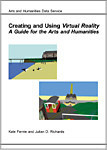
Format: Paperback
Pages: 128
ISBN: 9781842170403
Pub Date: 15 Dec 2003
Series: Archaeology Data Service & Digital Antiquity Guides to Good Practice
Description:
The essence of virtual reality lies with computer-based three-dimensional environments. Often termed 'worlds', these conceptual models can be navigated, interacted with and updated in real-time. This Guide to Good Practice is intended for individuals and organisations who are interested in potential ways to use virtual reality within the arts and humanities.
It concentrates on the most widely used form of virtual reality today, desk-top virtual reality, which may be distributed and viewed on-line via the World Wide Web. In these systems virtual reality worlds run on users' desk-top computers, are displayed on a standard monitor, and navigated using a mouse or 3-D space ball and keyboard. This Guide introduces virtual reality by considering its history, philosophy and theory, and discusses good practice in planning virtual reality projects. It presents the data management and documentation procedures required to enable models to be maintained, and enjoyed by the audiences for which they are intended. It also explores strategies for archiving and considers how to avoid the loss of virtual reality models as technology changes. A virtual library of case studies illustrates some applications of virtual reality in Archaeology, Architecture, Dance, Design, Fine Art, Heritage, History, Museum Studies and Theatre. Examples of worlds which allow users to interact with each other are also presented.
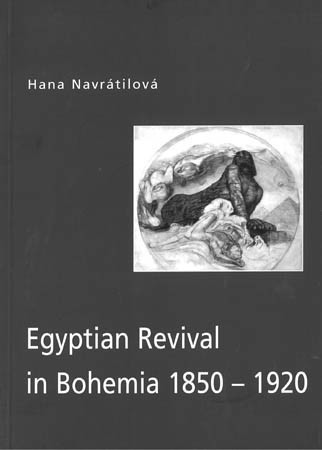
Format: Paperback
Pages: 300
ISBN: 9788086277325
Pub Date: 20 Nov 2003
Description:
Subtitled `Orientalism and Egyptomania in Czech lands', this study looks at Egyptian revival in the second half of the 19th century within Czech society. Asking who these Egyptomaniacs were and why they chose Egypt, Hana Navrátilová looks at the historical and cultural background of the period, arguing that Egyptian revivalism was important for both Czech cultural development and the formation of national identity. Greater accessibility to the ancient Orient through study and travel meant that Egypt became the focus for people's desire for knowledge and escapism.
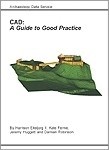
Format: Paperback
Pages: 104
ISBN: 9781900188722
Pub Date: 15 Apr 2003
Series: Archaeology Data Service & Digital Antiquity Guides to Good Practice
Illustrations: 22 b/w figs
Description:
From archaeological field work to heritage organisations and museums, increasingly CAD files and three-dimensional CAD models comprise a unique component of our digital archives - and one which it may not be possible to reproduce on paper. This Guide offers a basic description of computer-aided drafting or computer-aided design (CAD) software, discussions on the use of CAD in a variety of situations, descriptions of data acquisition methods including field survey and direct object scanning, and good practices in the use of the software. As well as providing a source of useful generic information, the guide emphasises the processes of long-term preservation, archiving, and effective data re-use.
An important aim of the Guide is to introduce practitioners to areas and issues for which applicable standards and frameworks already exist and to identify the relevant sources of information that may be consulted.

Format: Paperback
Pages: 128
ISBN: 9781842170229
Pub Date: 01 Dec 2002
Series: Archaeology Data Service & Digital Antiquity Guides to Good Practice
Illustrations: 15 b/w illus
Description:
Performing arts' covers a vast range of interests and skills, involving as it does designers, directors, actors and performers, musicians, critics, technicians, analysts, administrators, theorists. A central tenet of this Guide is to encourage professionals in the performing arts to consider some of the advantages that digital resources may now offer. It is noticeably different from its predecessors in the series.
Not so much a manual of 'how to do it' it is primarily intended to encourage you to use the available technology in the first place. All the contributors have directed successful projects involving various aspects of digital resources related to the performing arts. In some instances it was for documentation purposes, in some for teaching purposes, in some for research purposes, in some for all three. The guide includes a comprehensive glossary of terminology.
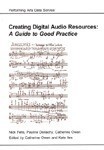
Format: Paperback
Pages: 64
ISBN: 9781842170380
Pub Date: 15 Mar 2002
Series: Archaeology Data Service & Digital Antiquity Guides to Good Practice
Description:
A basic `how to' for those using audio materials in the creation of digital resources. The guide addresses issues of copyright, the choice of appropriate equipment, presenting and delivering audio material, data management and methodological procedure.

Format: Paperback
Pages: 71
ISBN: 9781842170120
Pub Date: 01 Feb 2001
Series: Archaeology Data Service & Digital Antiquity Guides to Good Practice
Description:
A basic guide to transferring texts and archiving them (books, manuscripts) into electronic form or similar digital resources, with lots of pointers to specialised information.

Format: Paperback
Pages: 160
ISBN: 9781842170137
Pub Date: 01 Feb 2001
Series: Archaeology Data Service & Digital Antiquity Guides to Good Practice
Description:
This guide provides advice on legal issues such as Copyright and Rights Management when creating and using digital picture resources, technical advice on software and producing good quality images, standards for data documentation, project management, storage and preservation, and innovative creative techniques, including web design and virtual reality.

Format: Paperback
Pages: 300
ISBN: 9781842170144
Pub Date: 01 Dec 2000
Description:
Neo-Darwinism is becoming an increasingly important influence on archaeological theory, as a number of recently edited books on `Darwinian archaeologies' make clear. However, many of these volumes are internationally inconsistent and reflect the muddled understanding many archaeologists have of the potential of Darwin's thought for interpreting material culture. Ben Cullen's book starts by critiquing some recent neo-Darwinist approaches, including cultural evolutionism and cultural sociobiology.
He then presents a neo-Darwinian paradigm of extreme power, which he has termed the Cultural Virus Theory (CVT). This focuses on explaining the transmission of ideas by comparing cultural memes wit natural genes. In the final section he takes the important step of applying this theory to real materials; demonstrating how CVT can be used to understand the spread of megalithic monuments in prehistoric North-West Europe, the diffusion of the renaissance in medieval Europe and the basis of stylistic change in pottery. Tragically this collection of brilliant thoughts is published posthumously. Ben Cullen was close to finishing a major book when he died suddenly in 1995 and his writings have been gathered into a consistent whole by James Steele, Richard Cullen and Christopher Chippendale.

Format: Paperback
Pages: 76
ISBN: 9781900188739
Pub Date: 01 Dec 2000
Series: Archaeology Data Service & Digital Antiquity Guides to Good Practice
Description:
A straightforward guide which provides advice on preparing and depositing digital archives which also includes recommendations for archive curators and collecting agencies and copyright considerations. The book contains practical information and guidelines for depositing an archive with the Archaeological Data Service and the principals behind archiving archaeological data in a digital form.

Format: Paperback
Pages: 154
ISBN: 9780947816513
Pub Date: 01 Dec 2000
Illustrations: (A Tschan & P Daly). 154p, b/w illus, tbs
Description:
These nine papers, based on the 4th World Archaeological Congress held in South Africa in 1999, take a critical view of computer usage in archaeology and study its impact on the discipline and especially in terms of archaeological method and theory. Contents: Introduction (Gark Lock & Kayt Brown) ; Computers and archaeological cultural change (J Huggett) ; Archaeological computing and disciplinary theory (J Gidlow) ; Mathematics and computers (H Forsyth) ; Virtual reality (G Goodrick & M Gillings) ; Archaeological archives for the 21st century (F Grew) ; Intellectual excavation (A Beck) ; English sites and monuments records (B Robinson) ; Can computers help aerial survey? (R Palmer) ; Is there such a thing as `Computer Archaeology'?
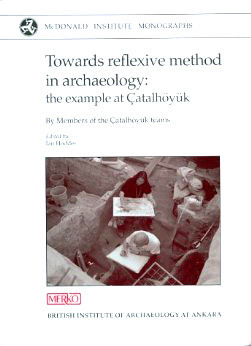
Format: Hardback
Pages: 300
ISBN: 9781902937021
Pub Date: 01 Dec 2000
Series: McDonald Institute Monographs
Illustrations: b/w pls
Description:
In the early 1990s the University of Cambridge reopened excavations at the Neolithic site of Catalhöyuek in central Turkey, abandoned since the 1960s. In this volume, Ian Hodder explains his vision of archaeological excavation, where careful examination of context and an awareness of human bias allows researches exciting new insights into prehistoric cognition. The aim of the volume is to discuss some of the reflexive or postprocessual methods that have been introduced at the site in the work there since 1993.
These methods involve reflexivity, interactivity, multivocality and contextuality or relationality.

Format: Paperback
Pages: 120
ISBN: 9781900188937
Pub Date: 01 Dec 1999
Series: Bournemouth Conservation
Description:
A volume of essays on communicating archaeology by every imaginable means provides an excellent tribute to the work of Bill Putnam - always a communicator. Learning by doing (Philip Rahtz), field archaeology in the 70s and 80s (John Hinchliffe), ignore good communication at your peril (Andrew Lawson), the IFA: what it means to be a member of a professional body (Timothy Darvill), talking to ourselves (Ellen McAdam), commissioning knowledge or making archaeology for books (Peter Kemmis Betty), arcane to ARC: the York experience (Andrew Jones), the National Curriculum (Mike Corbishley), past experience: the view from teacher education (Tim Copeland), child's play: archaeology out of school (Kate Pretty), university archaeology: ivory tower or white elephant? (Kevin Andrews) , liberal adult education in the second half of the twentieth century (Trevor Rowley), the local societies (John Manley) , archaeology in museums (Roger Peers).
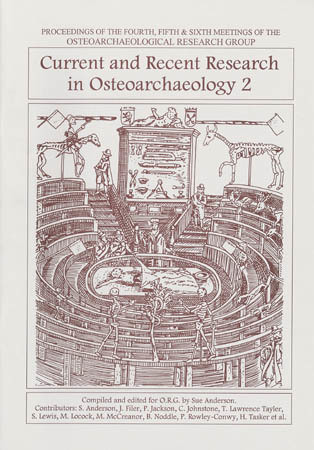
Format: Paperback
Pages: 61
ISBN: 9781900188975
Pub Date: 01 Dec 1999
Illustrations: b/w figs and pls
Description:
A collection of short papers and abstracts from the 4th, 5th and 6th proceedings of the Osteological Research Group, held in April and November 1996 and June 1997. The papers cover a wide range of subjects including technical information, evidence derived from bone assemblages and specific individual examples. Studies are presented on archaeozoology, domesticated animal bone assemblages, evidence of violence and stress indicators, measurement and statistical analysis and current research in the field of osteoarchaeology.

Format: Hardback
ISBN: 9781900188760
Pub Date: 01 Dec 1999
Description:
These essays, in honour of John Coles, reflect his interests in experimental archaeology and in the exploration of wetland sites. Contents include: Palaeolithic Archaeology: Radiocarbon dating and the origins of anatomically modern populations in Europe ( P Mellars ); The Chauvet cave dates ( J Clottes ); The archaeology of Scotland: The Hidden landscape: the Neolithic of Tayside ( G J Barclay ); The stony limits - rock carvings in passage graves and in the open air ( R Bradley ); Evidence, North and South, in the earlier Neolithic ( R J Mercer ); The birth of the Scottish Bronze Age ( J N Graham Ritchie ); Drinking, driving, death and display: Scottish Bronze Age artefacts since Coles ( A Sheridan ). Bronze Age archaeology: Bronze Age landscapess in Southern Europe ( G Barker ); From Skåne to Scotstown: some notes on amber in Bronze Age Ireland ( G Eogan ); Swords, shields and scholars: Bronze Age warfare, past and present ( A Harding ); Gold reflections ( J J Taylor ); Rise and fall: the deposition of Bronze Age weapons in the Thames valley and the Fenland ( R Thomas ); Bronze Age settlement in south Scandinavia - territorality and organisation ( H Thrane ); Experimental Archaeology: Getting to grips with music's prehistory: experimental approaches to function, design and operational wear in excavated musical instruments ( G Lawson ); Experimental ship archaeology in Denmark ( O Crumli-Pedersen ); Wood-tar and pitch experiments at Biskupin Museum ( W Piotrowski ); The nature of experiment in archaeology ( P J Reynolds ).
Wetland Archaeology: Somerset and the Sweet conundrum ( B Coles ); Paths, tracks and roads in early Ireland: viewing people rather than the trees ( B Raftery ); Underwater medieval sites on Lake Paladru (Isère, France): from rescue excavations to cultural project ( M Colardelle & E Verdel ). Epilogue: Of weapons and wetlands ( T Champion ). J M Coles - a bibliography.
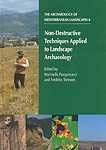
Format: Hardback
Pages: 276
ISBN: 9781900188746
Pub Date: 01 Dec 1999
Series: Archaeology of Mediterranean Landscapes
Description:
. The fourth book in the Archaeology of Mediterranean Landscapes series

Format: Hardback
Pages: 396
ISBN: 9781900188920
Pub Date: 01 Dec 1999
Illustrations: with illus
Description:
Even before the Mayflower sailed across the Atlantic in 1620, the material and cultural lives of the 'Old' and 'New' worlds were inextricably linked. This book reflects the techniques which archaeologists have used over the last 30 years to try and unravel, from a mass of material evidence, the lives of early Americans, and their English contemporaries. This book discusses the unique methodologies which historical archaeologists (in both Britain and the US) have developed to study early modern and industrial societies and new theoretical approaches focusing on ethnicity and domestic space, and new practical techniques using environmental as well as artifactual evidence.
The book contains forty two essays arranged thematically. Five are concerned with the use and interpretation of evidence; thirteen describe settlements and their communities on both sides of the Atlantic; four are on nautical and military operations; thirteen are concerned with artefacts and pottery and their manufacture and distribution; and seven use environmental evidence to throw new light on the human populations, and the plant and animal worlds of the time.
















